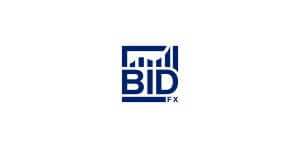2024: Why FX Liquidity Provision Analysis (LPA) will come into its own
“The FX landscape in 2024 will be characterised by a heightened demand for precision in liquidity assessment. Investment managers will no longer settle for surface-level insights but will delve into the intricacies of bid/offer prices, spreads, and algorithmic execution. Regulatory developments and the adoption of algorithmic execution are poised to further shape these dynamics, emphasising the need for a more detailed and transparent approach to navigating the increasingly fragmented world of FX markets. As we step into the New Year, a more nuanced understanding of liquidity will be the key to success in an ever-evolving financial landscape.”

By Daniel Chambers, Head of Data & Analytics at BidFX (an SGX company)
“As we usher in 2024, the world of market infrastructure is abuzz with anticipation, particularly in the foreign exchange (FX) markets where investors hang on every word uttered by central banks around monetary policy. Looking ahead, the New Year promises an increased need for a more granular assessment of liquidity, as the market braces for potential volatility in response to monetary policy decisions.
One of the key trends set to shape the FX market is the growing demand from investment managers for precise insights into their liquidity providers. No longer content with simply observing FX flow distribution, these fund managers are seeking to understand the rationale behind specific bid/offer prices, especially during critical moments like the minutes preceding a central bank’s rate decision.
 In the coming year, investment managers are expected to question why their FX flow has been directed to particular counterparties. Rather than passively accepting the liquidity provider’s perspective, they will demand transparency into the decision-making process, aiming to grasp the intricacies of the market at specific times. This shift signifies a departure from a broad overview of market conditions to a more detailed examination of bid/offer prices, spreads, order book positions, as well as price skews.
In the coming year, investment managers are expected to question why their FX flow has been directed to particular counterparties. Rather than passively accepting the liquidity provider’s perspective, they will demand transparency into the decision-making process, aiming to grasp the intricacies of the market at specific times. This shift signifies a departure from a broad overview of market conditions to a more detailed examination of bid/offer prices, spreads, order book positions, as well as price skews.
Regulatory developments will also play a role in shaping the approach to liquidity assessment. The ongoing FX Global Code review, particularly with a focus on the transparency principle, could further amplify the need for detailed liquidity analysis. Regardless of the review’s outcomes, FX traders need to actively seek out ways to bridge the gap between post-trade information and pre-trade decision-making. The concept of Liquidity Provision Analysis (LPA) becomes paramount in this scenario, equipping traders with insights before executing their orders.
Don’t expect interest FX algos to fizzle out in 2024 either. The adoption by asset managers and hedge funds has already reached significant milestones, with 30% and 40%, respectively, embracing algorithmic execution, according to a report by Coalition Greenwich from earlier this year. This surge in adoption is expected to drive a corresponding increase in demand for comparing expected execution costs using different liquidity provider algorithms.
 Currently, investment managers face a fragmented approach when assessing execution costs. Opening multiple bank FX trading platforms, they enter expected costs for executing specific amounts using particular algos. However, this approach lacks cohesion, requiring managers not only to evaluate bid/offer spreads but also to understand which liquidity provider is sending the trade to their execution algorithm. As a case in point, a fund manager may receive insights from liquidity providers, suggesting that they can execute a specific amount on an algorithm for a certain cost. Armed with this information, the manager might opt for an alternative liquidity provider. As investment managers increasingly rely on algorithms for their FX trades, investors will expect ongoing monitoring of algorithmic pricing.
Currently, investment managers face a fragmented approach when assessing execution costs. Opening multiple bank FX trading platforms, they enter expected costs for executing specific amounts using particular algos. However, this approach lacks cohesion, requiring managers not only to evaluate bid/offer spreads but also to understand which liquidity provider is sending the trade to their execution algorithm. As a case in point, a fund manager may receive insights from liquidity providers, suggesting that they can execute a specific amount on an algorithm for a certain cost. Armed with this information, the manager might opt for an alternative liquidity provider. As investment managers increasingly rely on algorithms for their FX trades, investors will expect ongoing monitoring of algorithmic pricing.
The FX landscape in 2024 will be characterised by a heightened demand for precision in liquidity assessment. Investment managers will no longer settle for surface-level insights but will delve into the intricacies of bid/offer prices, spreads, and algorithmic execution. Regulatory developments and the adoption of algorithmic execution are poised to further shape these dynamics, emphasising the need for a more detailed and transparent approach to navigating the increasingly fragmented world of FX markets. As we step into the New Year, a more nuanced understanding of liquidity will be the key to success in an ever-evolving financial landscape.”









